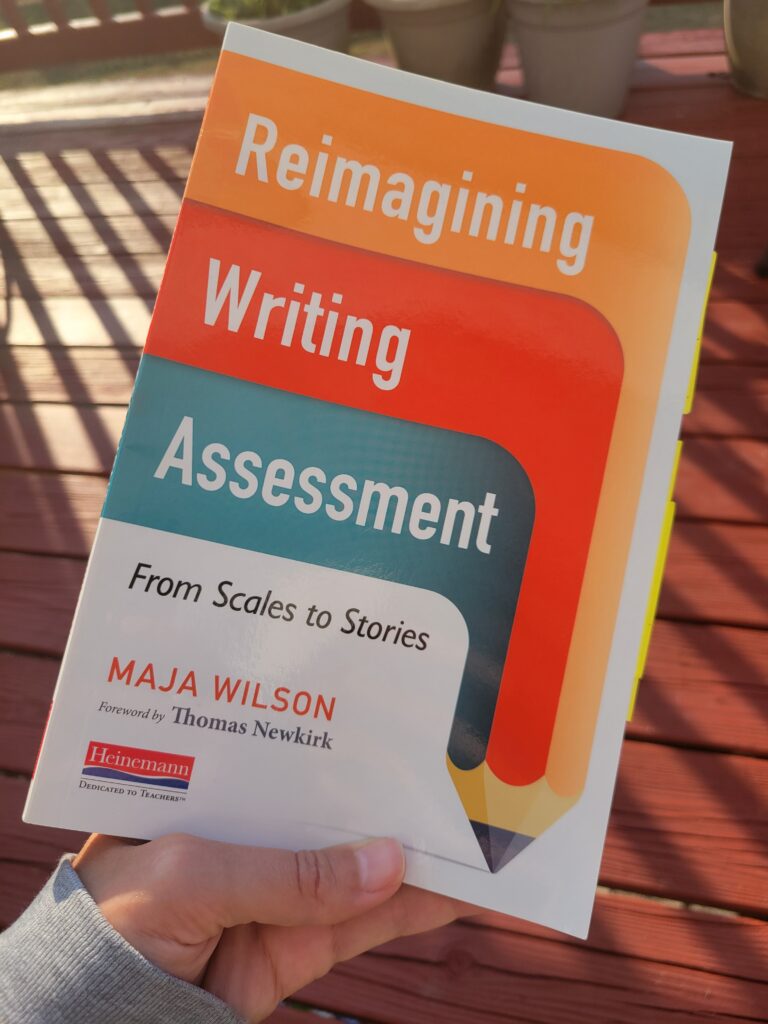
One of my goals has been to move to a gradeless, process driven approach to assessment. Unfortunately, despite my best intentions and plans, unexpected challenges and barriers have forced me to pull back and return to a more traditional approach, which has been extremely frustrating. Even more disappointing has been that my students were always intrigued by the shift when I explained to them how grades would be determined. There was skepticism, but I framed it as an experiment and a process that we’d be working to refine along the way. I’m hoping that I’m able to make it work this year, since I know what kept me from success last year and those barriers either won’t exist this year or won’t surprise me when they pop up. Looking back, I realize I was doing too much and I should have started small. This year, I’ll be focusing on going gradeless with writing and Reimagining Writing Assessment: From Scales to Stories by Maja Wilson will help me on this journey.
I’ve always been uncomfortable with rubrics because they are so confining and rarely capture a writer’s strengths and areas for growth accurately. Plus, they limit creativity and get in the way of risk taking. Reimagining Writing Assessment builds on Wilson’s earlier work in Rethinking Rubrics in Writing Assessment (which I own, but have not read) and encourages writing teachers to move away from rubrics and other standardized forms of writing assessment and let the story of a writer’s process unfold. Wilson provides research, tools, and narratives of how this has worked in her own practice and it’s clear that so much of the push to make writing assessment faster and easier for teachers, dehumanizes the process and fails to serve student writers. Feedback is important but when feedback consists of boxes checked on a rubric or canned comments from a curated bank, how is that helpful for students? How often do they use that feedback to grow as a writer? Listening to students, allowing time for reflection, and providing meaningful feedback through conferencing builds stronger relationships and leads to “growth in the right direction.” I loved how Wilson framed reading a student’s work as reading for the experience instead of reading to assess: “[W]hen an expert adopts a beginner’s mind and tells the story of her experience, the result is to open up experience rather than close it down. It also makes the process of evaluation more transparent. . . . If we tell the story of our experience of reading, then students are more likely to form useful understandings about how writing and reading work” (pg. 97). I will be thinking about this and revisiting Reimagining Writing Assessment often as I plan my first writing units and how I will approach teaching writing over the next few weeks.